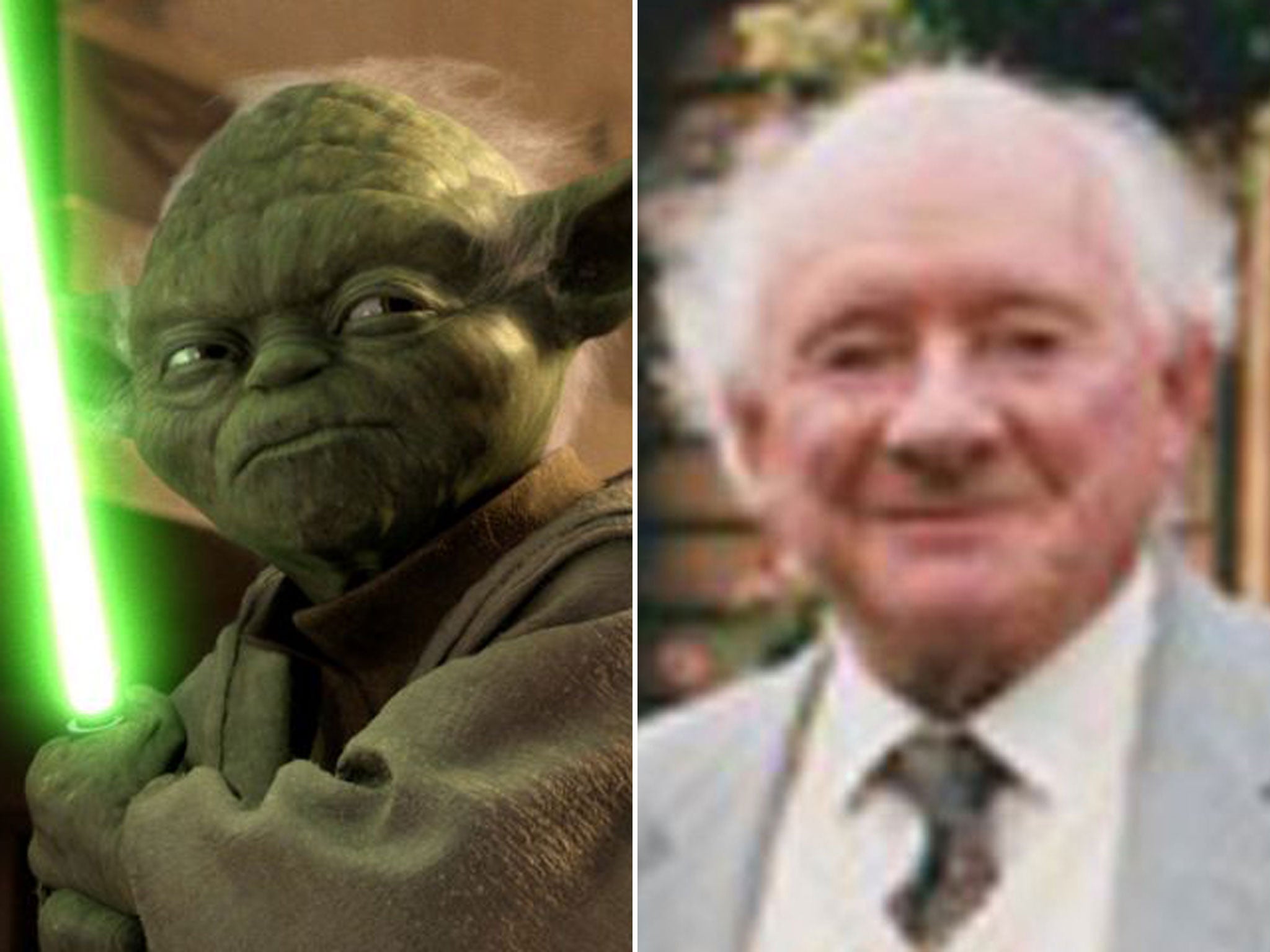Stuart Freeborn: Film make-up artist whose creations included Yoda, Fagin and the '2001' apes
He tried to spur attention in his skills by passing himself off as Haile Selassie; it led to his arrest

Over nearly six decades Stuart Freeborn was a leading make-up artist, creating a string of distinctive and innovative designs for directors including Alexander Korda, Powell and Pressburger, David Lean, Stanley Kubrick and George Lucas. His most famous creations are the apes in 2001: a Space Odyssey, and Yoda, Chewbacca and Jabba the Hutt in Star Wars.
Freeborn was the son of a Lloyds insurance broker but resisted following his father as, from a young age, he said, "I felt I was different." He was largely self-taught, studying chemistry to discover materials that were safe to use and practising on himself. He also studied hairdressing and sculpting, giving him a portfolio of skills that equipped him for his unique contribution to the industry.
The family moved to Beckenham in Kent, and Freeborn claimed that after he sent photographs of himself in various disguises to all the studios and heard nothing back, he tried to spur interest by passing himself off as Haile Selassie. When he was arrested, the story came to the attention of the producer, Alexander Korda, who gave Freeborn a break on Rembrandt (1936). He also worked on another biopic, Herbert Wilcox's Victoria the Great (1937).
He got to grips with colour on the now overlooked horse-racing musical Wings of the Morning (1937) – the first Technicolor film shot in Britain, which featured Henry Fonda and the tenor John McCormack – and Korda's more famous The Thief of Bagdad (1940). By then he had married his wife Kay, also a make-up artist, and they frequently collaborated.
Service in the RAF was shortened by haemophilia and Freeborn returned to the industry, joining Powell and Pressburger's The Life and Death of Colonel Blimp (1943). Three years later he got his first screen credit on Launder and Gilliat's noirish spy drama I See A Dark Stranger.
Most of Freeborn's make-ups had so far been relatively naturalistic, but with David Lean's Oliver Twist (1948) (where his name was misspelled Freebourne) he created a nightmarish Fagin, whose grotesquely Jewish appearance contributed to the film being delayed for release and then censored in the US. Freeborn was always uncomfortable with the decision as he had also proposed a more measured design, which Lean rejected. He also worked on Lean's 1850s real-life courtroom drama Madeleine (1950).
During the making of Bridge on the River Kwai (1957) Freeborn was involved in a car accident of which he was the only survivor, and spent several hours laying undiscovered and unconscious in the jungle before being rescued. It also meant several months away from the set, recovering in hospital.
That year he also worked on Chaplin's A King in New York. When Freeborn planned to use alcohol to remove the thick make-up and prosthetics Chaplin was horrified, fearing that the smell would linger, confirming rumours of his dypsomania.
Freeborn was a master of transforming people into lookalikes, including making Robert Morley in Oscar Wilde (1960), Richard Attenborough into John Christie in 10 Rillington Place (1971) and Simon Ward into Young Winston (1972). The task was somewhat easier in I Was Monty's Double (1958), as the wartime decoy was played by the man himself, ME Clifton James.
On Dr Strangelove (1964) Freeborn transformed Peter Sellers into a balding US president, a bumbling RAF officer and the maniacal former Nazi title character. He had performed a similar task on The Mouse That Roared (1959), in which Sellers' three roles included a Grand Duchess.
The relationship with Strangelove's director Stanley Kubrick continued with 2001: a Space Odyssey (1968), one of Freeborn's most challenging projects. The opening Dawn of Man sequence demanded incredibly realistic ape suits whose faces showed real character and could be controlled by the actors within. The level of detail was such that each hair was individually sewn into the lightweight foam suits. Some thought that, perversely, he had lost out for an Oscar because some voters didn't realise the apes weren't real.
Not all of his transformations were so radical. For the Superman franchise (1978, 1980, 1983, 1987) Freeborn suggested that the hero could be "disguised" by having him and Clark Kent part their hair on different sides.
In the 1970s Freeborn was approached by a young man with an idea for a space drama and, despite his youthfulness and the ambition of the scheme, Freeborn saw something worth trusting in George Lucas. Combining make-up, puppetry and animatronics Freeborn created a gallery of intergalactic creatures that became one of the Star Wars cycle's distinctive features. As with 2001's apes, the seven-foot wookie Chewbacca had individually stitched hair. Freeborn also created the obese slug-like gangster Jabba the Hutt and, for the alien-infested cantena scene, worked with his wife and son Graham, also a make-up designer.
Frank Oz had designed Luke Skywalker's tic-infected and language-torturing mentor Yoda for The Empire Strikes Back (1980) but director Irving Kershner was dissatisfied. Freeborn claimed that his version was "thrown together" and he had little faith that Lucas would like it, but in fact it was hailed as exactly right. He later admitted that the distinctive features were a combination of a self-portrait with a hint of Albert Einstein, topped with some "creature ears". It became one of the most popular characters in the cycle, outshining some of the humans, and Lucas recently licensed Yoda to advertise mobile phones.
Though he declined to give details, Freeborn also claimed that on more than one occasion he had enlarged actresses' breasts for nude scenes.
Stuart Freeborn, film make-up artist: born Leytonstone, London 7 September 1914; married Kay (died 2012: three sons deceased); died London 5 February 2013.
Join our commenting forum
Join thought-provoking conversations, follow other Independent readers and see their replies
Comments